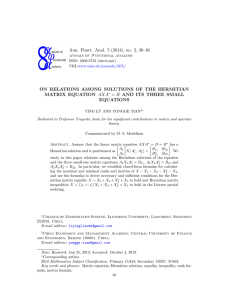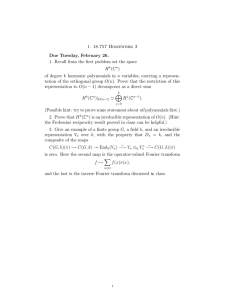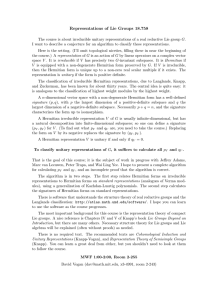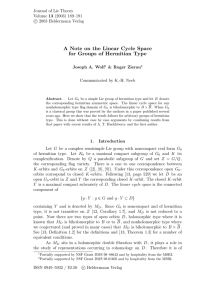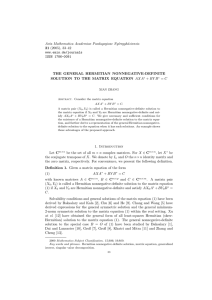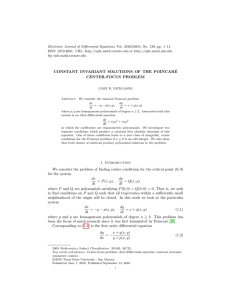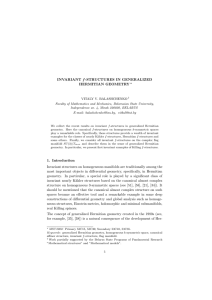February 4 and 11: David Vogan (MIT), “Computing signatures of... tian forms.”
advertisement
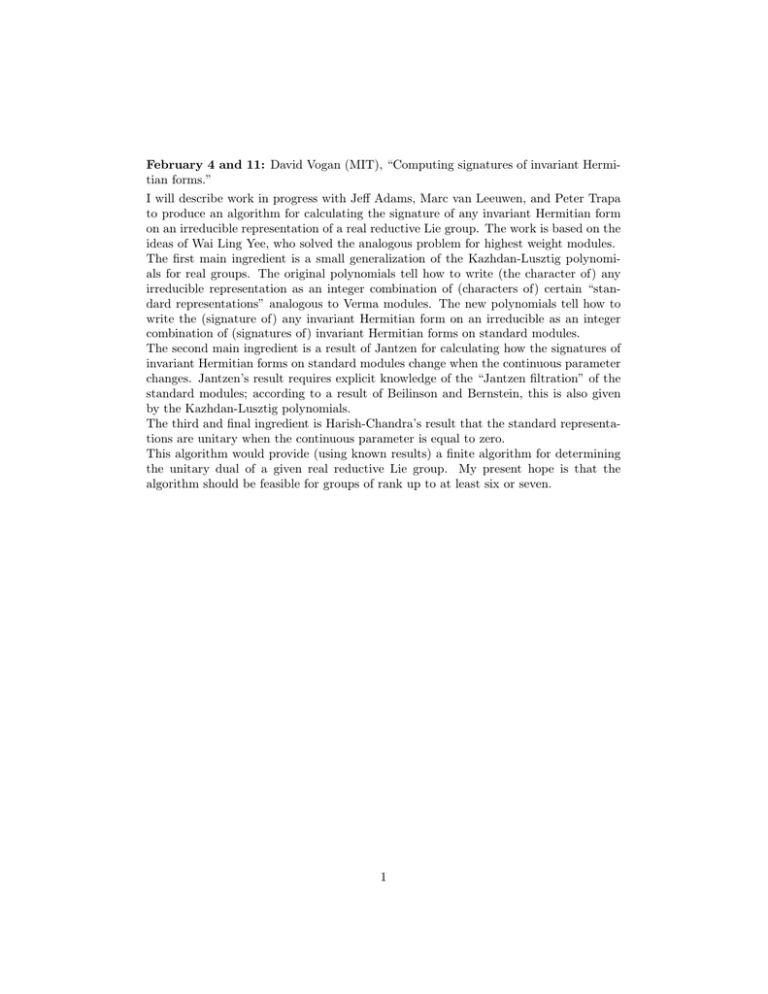
February 4 and 11: David Vogan (MIT), “Computing signatures of invariant Hermitian forms.” I will describe work in progress with Jeff Adams, Marc van Leeuwen, and Peter Trapa to produce an algorithm for calculating the signature of any invariant Hermitian form on an irreducible representation of a real reductive Lie group. The work is based on the ideas of Wai Ling Yee, who solved the analogous problem for highest weight modules. The first main ingredient is a small generalization of the Kazhdan-Lusztig polynomials for real groups. The original polynomials tell how to write (the character of) any irreducible representation as an integer combination of (characters of) certain “standard representations” analogous to Verma modules. The new polynomials tell how to write the (signature of) any invariant Hermitian form on an irreducible as an integer combination of (signatures of) invariant Hermitian forms on standard modules. The second main ingredient is a result of Jantzen for calculating how the signatures of invariant Hermitian forms on standard modules change when the continuous parameter changes. Jantzen’s result requires explicit knowledge of the “Jantzen filtration” of the standard modules; according to a result of Beilinson and Bernstein, this is also given by the Kazhdan-Lusztig polynomials. The third and final ingredient is Harish-Chandra’s result that the standard representations are unitary when the continuous parameter is equal to zero. This algorithm would provide (using known results) a finite algorithm for determining the unitary dual of a given real reductive Lie group. My present hope is that the algorithm should be feasible for groups of rank up to at least six or seven. 1
